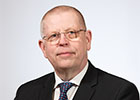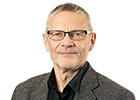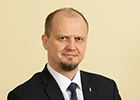Discussion of the matter of significant national importance, initiated by the Environmental Committee, titled "The necessity and possibilities of introducing nuclear energy in Estonia"
Session: 15th Riigikogu, 3rd session, plenary sitting
Date: 2024-04-18 13:04
Total Speeches: 141
Membership: 15
Agenda Duration: 3h 11m
AI Summaries: 141/141 Speeches (100.0%)
Analysis: Structured Analysis
Politicians Speaking Time
Politicians
Analysis
Summary
Under the heading of the current agenda item, the focus was placed on the needs and possibilities for the adoption of nuclear energy in Estonia. In the first part, a matter of national importance was presented at the initiative of the Environment Committee, followed by presentations from representatives of parliamentary factions and expert groups: Igor Taro, Chairman of the Environment Committee; Reelika Runnel, Head of the Radiation and Nuclear Safety Department at the Ministry of Climate; Lauri Tammiste, Director of the Stockholm Environment Institute Tallinn Centre; and Aigo Allmäe, Advisor to the Ministry of the Interior. Each speaker delivered a presentation accompanied by a question-and-answer session, and members of the Riigikogu were given the opportunity to pose one question to each representative. Discussions followed, and the initiator requested an extension of the sitting so that the review could continue more thoroughly, if possible, until the agenda was exhausted. The final conclusion of the debate was that the Riigikogu did not immediately adopt a final decision regarding nuclear energy, but a vote on the extension took place following the session.
Decisions Made 1
The session was extended until the agenda was exhausted, but no later than 2:00 PM. The voting result: 42 in favor, with no votes against or abstentions.
Most Active Speaker
Most active speaker: Mario Kadastik. Position: other.
Aseesimees Jüri Ratas
AI Summary
Jüri Ratas introduces the organization and schedule of the discussion on the national issue, "The necessity and possibilities of introducing nuclear energy in Estonia," initiated by the Environment Committee. This includes the lengths of the presentations, the question-and-answer rounds, and the statements by representatives of the parliamentary groups (factions). He confirms that no decision will be adopted and requests that the sitting be extended until 2:00 PM.
Aseesimees Jüri Ratas
AI Summary
The proposal was supported by 42 votes, with no votes against and no abstentions; the Riigikogu requested Igor Taro, the chairman of the Environment Committee, to give a presentation.
Igor Taro
AI Summary
Igor Taro emphasized that today's discussion on the necessity of adopting nuclear energy is a national strategic initiative, centered on achieving environmental and climate goals and ensuring economic well-being. Nuclear energy is a viable option for reducing fossil fuel emissions, but it is accompanied by challenges and requires the Riigikogu (Parliament) to establish clear standards and make decisions regarding costs.
Aseesimees Jüri Ratas
AI Summary
The Deputy Speaker thanked the previous speaker and acknowledged the questions, inviting Tanel Kiik to take the floor next.

Tanel Kiik
Profiling Fraktsiooni mittekuuluvad Riigikogu liikmedAI Summary
Tanel Kiik asks whether, in the nuclear energy debate, comparisons should be sought with countries that are at a crossroads regarding energy development, rather than with those that have closed nuclear power plants, in order to make the discussion more factually precise and comparable.
Igor Taro
AI Summary
Igor Taro emphasizes that the crossroads will only be reached in about 15 years, and in the next decade, fossil fuel production must be definitively shut down. Following this, the choice will be between transition technologies using biogas or natural gas. Their emissions are higher than those from nuclear, solar, and wind energy, and by 2035–2040, we will be facing roughly the same situation.
Aseesimees Jüri Ratas
AI Summary
Deputy Speaker Jüri Ratas calls upon Urmas Kruuse to speak.

Urmas Kruuse
Profiling Eesti Reformierakonna fraktsioonAI Summary
The speaker stressed the necessity of serious debates within the Riigikogu and asked hypothetically what the core arguments against building a nuclear power plant might be—arguments that could ultimately prevent its construction.
Igor Taro
AI Summary
Igor Taro emphasizes that discussions about nuclear energy focus on market suitability and cost, as well as the availability of technology, but the final decision is ultimately made by the developer and the financier, because the market decides, and the certification deadlines (2028–2030) depend on the selection of suitable technology.
Aseesimees Jüri Ratas
AI Summary
Deputy Chairman Jüri Ratas invites Mario Kadastik to speak.

Mario Kadastik
Profiling Fraktsiooni mittekuuluvad Riigikogu liikmedAI Summary
We are not going to decide in the near future where or what kind of nuclear power plant to build. Instead, we are focusing on what steps to take next and whether we should even be considering a nuclear power plant at all.
Igor Taro
AI Summary
Igor Taro emphasizes that we are talking about a long-term plan, one that spans more than ten years, and we must decide whether to keep the option open or leave it closed. Crucially, we need to establish the framework and rules today so that the decision made roughly 15 years from now can be implemented quickly.
Aseesimees Jüri Ratas
AI Summary
The address begins by inviting Margit Sutrop.

Margit Sutrop
Profiling Eesti Reformierakonna fraktsioonAI Summary
Margit Sutrop emphasized that a good life for people, sufficient energy, and a clean natural environment require balancing different values; she herself supports a nuclear power plant, but asks the commission whether security could be less valuable than sufficient energy and the natural environment.
Igor Taro
AI Summary
He notes that although there have been scientific claims regarding the high risk of military targeting of nuclear power plants and the need to discuss this in a separate report, such facilities have not been attacked during the war in Ukraine, which reflects a discrepancy between expectations and reality.
Aseesimees Jüri Ratas
AI Summary
Ratas asks us to call Peeter Tali to the stage.

Peeter Tali
Profiling Fraktsiooni mittekuuluvad Riigikogu liikmedAI Summary
Peeter Tali argues that should Estonia become a nuclear state, bringing with it new technology, the question arises whether Estonia ought to deploy nuclear weapons, stressing that these should only be small, friendly tactical nuclear warheads, and nothing larger.
Igor Taro
AI Summary
Igor Taro emphasizes that separating nuclear energy and nuclear armament is crucial for achieving climate goals, and that a global solution requires building reactors with capacities of 700–1000 MW. However, a way must be found to prevent the proliferation of weapons. Furthermore, from Estonia’s point of view, NATO has the right to deploy all types of weapons anywhere, based on agreements with the host countries.
Aseesimees Jüri Ratas
AI Summary
Vice-Speaker Jüri Ratas invited Tiit Maran to the stage.

Tiit Maran
Profiling Fraktsiooni mittekuuluvad Riigikogu liikmedAI Summary
Tiit Maran notes that a strange shift is currently underway in Estonia: moving from the emotional denial of nuclear energy to the emotional affirmation of it, a trend being shaped by lobby organizations. He emphasizes the necessity of obtaining the most objective information possible in order to decide whether Estonia actually needs nuclear energy to meet its energy demands.
Igor Taro
AI Summary
Igor Taro emphasized that before making the decision to adopt nuclear energy, it is crucial to first establish the framework and rules, and assess the actual need and the availability of certified technology, so that the decision is rational and does not create premature expectations for anyone regarding the project’s advancement.
Aseesimees Jüri Ratas
AI Summary
The Deputy Chairman called upon Andres Sutt to speak.
Andres Sutt
AI Summary
Andres Sutt confirms the need for additional investments in the energy sector, highlights the trade-offs that emerge when evaluating these investments, and asks which technologies will be worth investing in in the future, and what the better alternatives are if nuclear energy is ruled out.
Igor Taro
AI Summary
Igor Taro stresses that in the search for emission-free energy, all alternatives must be carefully assessed, given that wind, solar, and nuclear power are on the same footing regarding emissions, while biofuels occupy a second tier, and fossil sources generate significantly higher emissions. Consequently, the choices are limited, and there is no single magic bullet. We must weigh all possibilities and implement multiple stabilization barriers; this scenario will be discussed further in upcoming presentations.
Aseesimees Jüri Ratas
AI Summary
Deputy Speaker Jüri Ratas asks Anti Allast to speak.

Anti Allas
Profiling Fraktsiooni mittekuuluvad Riigikogu liikmedAI Summary
Anti Allas posed questions concerning the ideal energy portfolio profile for Estonia 20 years from now, including what that portfolio would consist of, what constitutes the most environmentally friendly and affordable electricity, and how large a share of it could be based on nuclear power.
Igor Taro
AI Summary
Igor Taro said that the energy strategy must be a mix of different options, and one should not emotionally commit to a single variant, because replacing fossil fuels, the headroom for economic growth, and the sheer volume of hectares required to build wind and solar parks all demand a comprehensive plan, and right now it is impossible to give any exact percentage.
Aseesimees Jüri Ratas
AI Summary
Jüri Ratas thanked the speaker and the answers provided, and invited Reelika Runnel, Head of the Radiation and Nuclear Safety Field of the Ministry of Climate, to the Riigikogu rostrum for the next presentation.
Kliimaministeeriumi valdkonnajuht Reelika Runnel
AI Summary
Before the Riigikogu, Reelika Runnel, Head of Department at the Ministry of Climate, confirmed that the nuclear energy working group, established in 2021, submitted a final report analyzing Estonia's potential for adopting nuclear energy. The report compiled 11 thematic analyses and international cooperation efforts, focusing on the suitability, safety, grid compatibility, environmental impact, fuel availability, and geopolitical considerations of small modular reactors. The adoption of nuclear energy requires national regulation and the establishment of a nuclear regulator, 16 potential regions (four of which are aimed at regional development), preparation costs amounting to 73 million euros, and annual fixed costs of 6.5–10 million euros. Furthermore, international cooperation and the involvement of experts will continue, but the final decision must be made by the Riigikogu and the government. Before the decision is adopted, funding, public support, and site-technology assessment must be secured. In summary, the goal was not to choose sides, but to provide the best information for decision-making, and nuclear energy could be part of ensuring climate and energy security for Estonia, provided all conditions are met.
Aseesimees Jüri Ratas
AI Summary
Jüri Ratas thanked the server, said he had some questions, and invited Urve Tiidus to come over to them.

Urve Tiidus
Profiling Eesti Reformierakonna fraktsioonAI Summary
Urve Tiidus thanked the chair and the presenter, stating that the final report on the implementation of nuclear energy raises two specific questions: whether nuclear energy is cheaper than current energy, and what its water consumption is—a detail not specified in the report—and she requested that an assessment of this be provided as well.
Kliimaministeeriumi valdkonnajuht Reelika Runnel
AI Summary
The report highlights that nuclear energy is not the cheapest solution either on the global market or in Estonia, and its adoption depends on the choice of technology and the requirement for baseload capacity, while water consumption and environmental aspects require thorough analysis.
Aseesimees Jüri Ratas
AI Summary
Deputy Speaker Jüri Ratas asks Andre Hanimägi to take the floor.

Andre Hanimägi
Profiling Fraktsiooni mittekuuluvad Riigikogu liikmedAI Summary
Andre Hanimägi notes that political indecision stems from the lack of black-and-white solutions, emphasizes that no one has presented good alternatives, and calls for an analysis of the options available instead of a nuclear power plant, including their costs and impact on the energy portfolio. Furthermore, he stresses that if a decision is made, it must be carried through to the end, and there must be clarity on exactly what was decided.
Kliimaministeeriumi valdkonnajuht Reelika Runnel
AI Summary
Reelika Runnel stated that the mandate of the nuclear energy working group did not include considering alternatives. Their task was to answer whether and under what conditions nuclear energy could be introduced in Estonia. However, alternative options are being analyzed during the preparation of the energy sector development plan, and the ministry has commissioned a study on the future composition of our energy portfolio, the results of which will be published in May.
Aseesimees Jüri Ratas
AI Summary
Deputy Chairman Jüri Ratas invited Mario Kadastik to speak.

Mario Kadastik
Profiling Fraktsiooni mittekuuluvad Riigikogu liikmedAI Summary
The core message of the presentation is that the viability of investing in a nuclear power plant hinges on the size of the market and its potential applications, not solely on generating electricity.
Kliimaministeeriumi valdkonnajuht Reelika Runnel
AI Summary
The framework we have created allows nuclear energy to be used not only for electricity generation but also for providing district heating, producing hydrogen, and developing scientific research. Finland plans to use this approach for district heating with 50 MW reactors starting in 2030, and this opportunity may also become available to Estonia, provided a national framework is in place.
Aseesimees Jüri Ratas
AI Summary
The talk is merely a brief request to Tiit Maran.

Tiit Maran
Profiling Fraktsiooni mittekuuluvad Riigikogu liikmedAI Summary
Tiit Maran asks how controllable nuclear energy is, how significant the change in production costs will be, how that price will compare to the price of renewable energy, and whether state guarantees—or taxpayer guarantees—are justified in the case of nuclear energy.
Kliimaministeeriumi valdkonnajuht Reelika Runnel
AI Summary
Nuclear energy is a dispatchable source of electricity, but it is not economically viable to use it solely for managing peak loads or as a reserve, because capital costs and loan interest rates determine the price, and that price is competitive and on the same order of magnitude as the price of electricity generated by offshore wind farms.
Aseesimees Jüri Ratas
AI Summary
Deputy Chairman Jüri Ratas addressed Kristina Šmigun-Vähi and asked her to speak.

Kristina Šmigun-Vähi
Profiling Eesti Reformierakonna fraktsioonAI Summary
Kristina Šmigun-Vähi stressed that Estonia has made efforts and considered things thoroughly, and she asked whether the state should invest more in science and reprocessing so that waste management would be safer and the rate of recovery would be higher.
Kliimaministeeriumi valdkonnajuht Reelika Runnel
AI Summary
Reelika Runnel said that the requirement for the immediate reprocessing of used fuel is a question of national policy, and the working group analyzed various options, including the possibility of sending the residue to France for reprocessing. However, 96% of the residues can be recovered, while 4% requires storage and final disposal, and reprocessing does not solve all waste problems.
Aseesimees Jüri Ratas
AI Summary
Deputy Speaker Jüri Ratas calls on Rain Epler to deliver his speech.

Rain Epler
Profiling Fraktsiooni mittekuuluvad Riigikogu liikmedAI Summary
Rain Epler asks that his colleagues be calmed down and that the public be informed that associating nuclear energy with nuclear armament—which occurred during the demagogic and publicly misleading dialogue in the previous round—is inappropriate for the debate.
Kliimaministeeriumi valdkonnajuht Reelika Runnel
AI Summary
Reelika Runnel stressed that generating electricity with nuclear technology should not be equated with nuclear armament, as modern nuclear power plants are proliferation-proof and do not produce the plutonium used in weapons manufacturing.
Aseesimees Jüri Ratas
AI Summary
Vice-Speaker Jüri Ratas greeted his colleagues and announced that the Speaker's break would last five minutes.
Aseesimees Jüri Ratas
AI Summary
The recess called by the Chair has ended, and we will now proceed. Aivar Kokk, please.

Aivar Kokk
Profiling Isamaa fraktsioonAI Summary
Aivar Kokk notes that the answer was probably left unfinished.
Kliimaministeeriumi valdkonnajuht Reelika Runnel
AI Summary
He announces that he is abandoning nuclear weapons and emphasizes that, under the guise of a peaceful nuclear program, nuclear armament is internationally extremely complicated, monitored by the IAEA and the European Union, with inspectors counting every nano-unit of nuclear material in the country.
Aseesimees Jüri Ratas
AI Summary
Deputy Speaker Jüri Ratas invites Aivar Kokk to the stage.

Aivar Kokk
Profiling Isamaa fraktsioonAI Summary
The presentation gives the impression that Estonia is only discussing a 400-megawatt-hour nuclear power plant, which is insufficient during the winter. Consequently, they are considering the possibility of a larger reactor, or the option of building the plant outside of Estonia and jointly producing energy—for example, within the framework of the Finnish project.
Kliimaministeeriumi valdkonnajuht Reelika Runnel
AI Summary
Reelika Runnel, the sector manager at the Ministry of Climate, stated that while Elering has imposed a 400-megawatt limit to ensure system stability, this does not mean that Estonia's overall nuclear capacity is restricted. This is because the capacity of a single reactor must not exceed 400 MW, but realistically, there could be two, three, or four reactors, depending on the need and what the market can bear. Furthermore, a separate connection point must be established for each reactor. Although we currently consume nuclear power from Finland via cables, and the objective is to secure at least 1200 MW of controllable domestic generation capacity in Estonia for supply security, it is possible to pursue joint projects with other countries, but the priority remains domestic production capability.
Aseesimees Jüri Ratas
AI Summary
Vice-Speaker Jüri Ratas addresses Anti Allas and asks him for something.

Anti Allas
Profiling Fraktsiooni mittekuuluvad Riigikogu liikmedAI Summary
The necessity of state guarantees was discussed. Questions were also raised regarding what comparable countries intend to do about building similar projects in about 20 years and how they plan to execute those plans. Furthermore, they inquired whether a suitable underground nuclear waste disposal technology exists for Estonia, what the current experience with it is, and what the potential cost might be.
Kliimaministeeriumi valdkonnajuht Reelika Runnel
AI Summary
It is mentioned that state subsidies or guarantees for the construction of a nuclear power plant will only be decided during the construction phase when capital is being raised. At the same time, there is growing global interest in small reactors, with the private sector taking the lead, and technologies for geological final disposal are being developed. Finland and Sweden serve as examples, and similar solutions are being considered in Estonia.
Aseesimees Jüri Ratas
AI Summary
Deputy Speaker Jüri Ratas addresses Igor Taro and asks him to come.
Igor Taro
AI Summary
He asks whether the preparation for the construction of the station has also been taken into account when calculating the cost figure, and whether the costs for establishing the framework and the regulator can be brought down to a significantly lower level until the final decision is made.
Kliimaministeeriumi valdkonnajuht Reelika Runnel
AI Summary
In the initial years, the costs of the nuclear program are small and optimizable, but during the construction phase, larger national system maintenance costs arise, mainly public sector salary costs, and 30% of these can be reduced through international cooperation.
Aseesimees Jüri Ratas
AI Summary
Deputy Chairman Jüri Ratas invites Andres Sutt to take the floor.
Andres Sutt
AI Summary
Andres Sutt thanked those involved for compiling the report and engaging the experts. He emphasized the participation of foreign experts and asked what lessons should be learned from the three nuclear accidents and what steps Estonia should take, if the decision is made to adopt nuclear energy, to ensure similar accidents do not recur.
Kliimaministeeriumi valdkonnajuht Reelika Runnel
AI Summary
According to statistics, nuclear energy is one of the safest ways to produce energy in the world. This is because modern reactors comply with current requirements, and multiple layers of protection, including both active and passive systems, significantly reduce the probability of serious damage. A lot has been learned from past accidents, and the technology has evolved over decades to become safer and more reliable. Furthermore, because any incident, wherever it occurs, impacts the entire world and the nuclear industry, the International Atomic Energy Agency (IAEA) conducts oversight, and countries receive comprehensive assistance to ensure nuclear energy is utilized properly.
Aseesimees Jüri Ratas
AI Summary
Deputy Speaker Jüri Ratas thanked the rapporteur and for the answers, announced that there were no questions, and invited Lauri Tammiste, Director of the Stockholm Environment Institute Tallinn Centre, to the Riigikogu podium for his presentation.
SEI Tallinna juhataja Lauri Tammiste
AI Summary
Lauri Tammiste, the head of SEI Tallinn, stated that based on the 2022 study, Estonia needs a diverse generation portfolio for a climate-neutral energy system—solutions utilizing wind, solar, biomass, and, if necessary, nuclear energy—and while the most cost-effective results are achieved by including all technologies, the carbon capture scenario performed poorly, and security of supply depends on various constraints and investments.
Aseesimees Jüri Ratas
AI Summary
Vice-Speaker Jüri Ratas asks how much you would like.
SEI Tallinna juhataja Lauri Tammiste
AI Summary
The speaker, Lauri Tammiste, emphasizes that the presentation is two minutes long.
Aseesimees Jüri Ratas
AI Summary
Deputy Chairman Jüri Ratas requests three minutes of time.
SEI Tallinna juhataja Lauri Tammiste
AI Summary
According to Lauri Tammiste, head of SEI Tallinn, the advancement of renewable energy in Estonia must be promoted through mature technologies—wind and solar parks, demand management, and storage—and nuclear energy should remain a secondary, not a primary, solution, as its construction and associated costs are significantly higher. The question of choice, depending on costs and risks, is whether to utilize oil shale power plants, introduce nuclear energy, invest in biomethane capacity, or opt for gas combined with carbon capture and storage.
Aseesimees Jüri Ratas
AI Summary
Vice-Chairman Jüri Ratas thanked the rapporteur and declared that they had moved on to questions, inviting Urve Tiidus to take the floor.

Urve Tiidus
Profiling Eesti Reformierakonna fraktsioonAI Summary
He asks whether those developing wind and solar energy parks shouldn't worry that a competitor—a nuclear power plant—is going to pop up right next to them.
SEI Tallinna juhataja Lauri Tammiste
AI Summary
It all depends on the scale: if development is carried out according to Estonia's demand and growing electricity consumption, both an offshore wind farm and a nuclear power plant can be accommodated. However, if developers want to monopolize the entire capacity for themselves, the situation becomes complicated, and choices will have to be made.
Aseesimees Jüri Ratas
AI Summary
Deputy Chairman Jüri Ratas invited Mario Kadastik to take the floor.

Mario Kadastik
Profiling Fraktsiooni mittekuuluvad Riigikogu liikmedAI Summary
Kadastik notes that although the most favorable scenarios were considered, security in the current security environment is bolstered by a wider portfolio and stable domestic production, because Estonia is like an island, and the complete reliability of connections is not one hundred percent certain due to existing risks.
SEI Tallinna juhataja Lauri Tammiste
AI Summary
Lauri Tammiste said that any extra generation capacity in Estonia is beneficial, provided we don't overinvest. However, what is more crucial is ensuring that Estonia's energy markets and interconnections operate effectively. This functioning allows for both affordable imports and exports, thereby strengthening both the economy and national security, while simultaneously preventing a scenario where countries are forced to rely 100% on their own energy supplies.
Aseesimees Jüri Ratas
AI Summary
Deputy Speaker Jüri Ratas called Yoko Alender to the podium.

Yoko Alender
Profiling Eesti Reformierakonna fraktsioonAI Summary
He emphasizes the long-term perspective and believes that establishing a nuclear power plant in Estonia by 2050 is entirely feasible. However, the use of biomass and the burning of wood in large oil shale boilers doesn't seem sensible, and he wants to see wood utilized for higher value-added purposes.
SEI Tallinna juhataja Lauri Tammiste
AI Summary
The results indicate that large-scale biomass combustion is risky and unsustainable within the Estonian context, which is why the most optimal production portfolio must be re-analyzed with constraints and updated by 2050.
Aseesimees Jüri Ratas
AI Summary
Deputy Speaker Jüri Ratas called upon Rain Epler to speak.

Rain Epler
Profiling Fraktsiooni mittekuuluvad Riigikogu liikmedAI Summary
Rain Epler noted that the price of offshore wind energy has significantly dropped, and the use of LCOE as a justification for criticism should be discontinued. He cited an example from the US East Coast, where PPAs were originally around 78 euros/MWh. Now, they expect to recover about 150 euros plus 40–50 euros in state subsidies, totaling approximately 200 euros/MWh, asking how these real-world figures should be accounted for.
SEI Tallinna juhataja Lauri Tammiste
AI Summary
Lauri Tammiste said that the differences in national electricity markets and support models make comparing projects complicated, and the most reliable criterion of truth is the price and impact of projects implemented in practice, even though the figures vary within Europe and the competitiveness of technologies does not change radically.
Aseesimees Jüri Ratas
AI Summary
Deputy Speaker Jüri Ratas invites Kristina Šmigun-Vähi to speak.

Kristina Šmigun-Vähi
Profiling Eesti Reformierakonna fraktsioonAI Summary
Kristina Šmigun-Vähi asked what the initial data points were that had drastically changed over the past two years, and whether a nuclear power plant could ensure electricity price stability and give us an advantage as a result.
SEI Tallinna juhataja Lauri Tammiste
AI Summary
He stressed that while technologies are advancing and the cost of solar technology, wind energy, and battery storage is dropping, and the use of biomass requires review, the price of electricity cannot be determined solely based on nuclear energy. Crucially, a combination tailored to the country's specific characteristics—involving renewable sources, dispatchable capacity, storage, and a smart grid—is essential.
Igor Taro
AI Summary
He asks how relevant the unpredictability of the construction timeline and the predictability of costs are in a discussion that focuses solely on the decision to create the framework.
Aseesimees Jüri Ratas
AI Summary
Deputy Speaker Jüri Ratas invited Igor Taro to the stage.
SEI Tallinna juhataja Lauri Tammiste
AI Summary
Lauri Tammiste, the director of SEI Tallinn, stated that the risks associated with small modular reactors could ultimately fall to consumers or the state, and without state support or guarantees, they are typically not competitive. He added that while we might be the first, international experience shows that nuclear power plants are usually constructed with state backing and only rarely under pure market conditions.
Aseesimees Jüri Ratas
AI Summary
Deputy Speaker Jüri Ratas asked Aivar Kokk to speak.

Aivar Kokk
Profiling Isamaa fraktsioonAI Summary
Aivar Kokk stressed that Estonia needs dispatchable electricity, either produced domestically in sufficient quantities or available at an affordable price. He recalled that ten years ago we produced electricity for our own consumption, noted the significant role of large-scale pellet production and export, mentioned the 80 million euro cost associated with converting oil shale boilers, and cited the price of pellet-generated electricity at around 100 euros per MWh. Finally, he asked why we shouldn't consider building a nuclear power plant?
Aseesimees Jüri Ratas
AI Summary
It is noted in the introduction to the address that the esteemed presenter is ready and their time has come.

Aivar Kokk
Profiling Isamaa fraktsioonAI Summary
Aivar Kokk recommends that these plants be converted to run on pellets.
SEI Tallinna juhataja Lauri Tammiste
AI Summary
I believe this is a subject for debate and discussion. Furthermore, models indicate that, provided we have the production capacity, transitioning to biofuel is relatively cost-effective. However, the wider question is how much wood we actually use and burn in Estonia. These answers must be determined within the forestry development plan and based on the targets set by the climate law, which will then inform our choices regarding energy production.
Aseesimees Jüri Ratas
AI Summary
Deputy Speaker Jüri Ratas thanked the rapporteur for his presentation and answers, stated that there were no further questions, and invited the next speaker, Aigo Allmäe, Advisor to the Ministry of the Interior, to the Riigikogu rostrum.
Siseministeeriumi nõunik Aigo Allmäe
AI Summary
The presentation emphasizes that nuclear safety in Estonia must be ensured systematically—through prevention, detection, and response—by establishing a national regulator, implementing a licensing process, fostering broad cooperation, and developing additional readiness for evacuation and radiation safety. The total cost for this is estimated at up to 54 million euros.
Esimees Lauri Hussar
AI Summary
The Chairman thanked the presenter and announced that there were questions, and the first questioner is Mario Kadastik.

Mario Kadastik
Profiling Fraktsiooni mittekuuluvad Riigikogu liikmedAI Summary
He thanked the speaker for the substantive presentation and asked whether Estonia should develop emergency response capabilities, and at what level, regardless of the decision on whether we build a plant ourselves, considering that the entire country falls within the 100–300 kilometer radii of nuclear power plant emergency and planning zones.
Siseministeeriumi nõunik Aigo Allmäe
AI Summary
In summary, the development of CBRN or KBRT capabilities at the national level extends beyond the mere context of a nuclear power plant. Furthermore, existing analyses indicate that no single plant has a significant impact reaching 300 kilometers, and some countries utilize a specific coefficient instead of planning zones, which accommodates all the various planning zones.
Esimees Lauri Hussar
AI Summary
The Chairman thanked the audience and then called Urve Tiidus to the stage next.

Urve Tiidus
Profiling Eesti Reformierakonna fraktsioonAI Summary
Urve Tiidus thanked the manager and the server, and asked the young people who graduated in the spring if they had any recommendations regarding the assurance of nuclear security.
Siseministeeriumi nõunik Aigo Allmäe
AI Summary
Whether or not there is a nuclear power plant, there is always work in security.
Esimees Lauri Hussar
AI Summary
Chairman Lauri Hussar asks Toomas Uibo to come forward.

Toomas Uibo
Profiling Eesti 200 fraktsioonAI Summary
Toomas Uibo asks whether a comparison or calculation has been made regarding the security of a nuclear power plant and offshore wind farms, and which of them is easier or cheaper to secure.
Siseministeeriumi nõunik Aigo Allmäe
AI Summary
I cannot compare ensuring the security of a nuclear power plant with the security of offshore wind farms because our analysis did not focus on that; while there are certainly challenges regarding wind farms, that input is provided by a competent authority or the relevant agency.
Esimees Lauri Hussar
AI Summary
Chairman Lauri Hussar invites Kristina Šmigun-Vähi to speak.

Kristina Šmigun-Vähi
Profiling Eesti Reformierakonna fraktsioonAI Summary
During the session, Kristina Šmigun-Vähi asks who will take responsibility, whether the Ministry of the Interior is the body that distributes the tasks and coordinates the work, and who the actual main person responsible is.
Siseministeeriumi nõunik Aigo Allmäe
AI Summary
In order to allocate responsibility and manage the entire system, a national nuclear regulator and capability development are necessary, because the state's responsibility begins when radioactive material is brought into Estonia and placed in the reactor, a process which may take 9–11 years.
Esimees Lauri Hussar
AI Summary
Chairman Lauri Hussar thanked the presenter for the engaging and thorough presentation, announced that there were no questions, and declared the debate open, inviting Yoko Alender to the Riigikogu podium.

Yoko Alender
Profiling Eesti Reformierakonna fraktsioonAI Summary
The presentation centers on reducing fossil fuels and ensuring energy security through clean, affordable energy, promoting renewable energy and storage capacity, and considering long-term nuclear power. The initial step for this involves giving the government the green light based on the nuclear energy working group's report and drafting a legal framework. This process must include the involvement of experts, communities, and residents, alongside an assessment of environmental, economic, and security impacts, as well as costs.
Esimees Lauri Hussar
AI Summary
Speaker Lauri Hussar requests three minutes of additional time.

Yoko Alender
Profiling Eesti Reformierakonna fraktsioonAI Summary
This is the first step in shaping the long-term future: starting to build enough new clean energy solutions so that Estonia is always competitive, prosperity grows, and the living environment remains clean, and optimism is our duty and responsibility.
Esimees Lauri Hussar
AI Summary
The Chairman, on behalf of the Reform Party Faction, thanks the rapporteur, confirms that the initiator of the debate requested that the representatives of the factions speak first, and next invites Aivar Koka, the representative of the Isamaa Faction, to the rostrum.

Aivar Kokk
Profiling Isamaa fraktsioonAI Summary
In his presentation, Aivar Kokk emphasized that Estonia must ensure sufficient and affordably priced electricity production, pointing to the stalling of wind farm development and the impact of connection costs, and calling for consideration of a wider range of energy sources, including nuclear energy and the better utilization of pellets and oil shale, in order to reduce dependence on external prices and guarantee energy security.
Esimees Lauri Hussar
AI Summary
Chairman Lauri Hussar requests three minutes of extra time.

Aivar Kokk
Profiling Isamaa fraktsioonAI Summary
Aivar Kokk emphasizes that Estonia must have dispatchable and affordable electricity, and therefore careful consideration must be given to whether electricity production from pellets (converting old boilers at a cost of 80 million), nuclear energy, or offshore wind farms will provide a better balance of price and security, because the final price is paid by the consumer, and the energy system must be diversified and reliable.
Esimees Lauri Hussar
AI Summary
The EKRE faction requests that Rain Epler be invited to the Riigikogu podium to speak.

Rain Epler
Profiling Fraktsiooni mittekuuluvad Riigikogu liikmedAI Summary
Rain Epler briefly emphasized the importance of nuclear safety, explaining radiation doses and dosimeters, and referencing historical lessons (Three Mile Island, Chernobyl, Fukushima). He affirmed that modern safety systems and fact-based discussion mitigate risks, but noted that the initial investment for a nuclear power plant is substantial. Furthermore, when evaluating actual productivity, it must be benchmarked against an offshore wind farm.
Esimees Lauri Hussar
AI Summary
Chairman Lauri Hussar requests three minutes of additional time for the speaker.

Rain Epler
Profiling Fraktsiooni mittekuuluvad Riigikogu liikmedAI Summary
Rain Epler points out that the lifespan of an offshore wind farm is 25–30 years, while a nuclear power plant lasts 80+ years, and the significant proportion of infrastructure involved affects how the final price is determined. He recommends substantially reducing the cost through greater standardization at the European level and calculating exactly how many hectares would be required for solar and wind energy to meet the world’s total energy demand.
Esimees Lauri Hussar
AI Summary
The Chairman thanked [the previous speaker] and invited Priit Lomp, who will be speaking on behalf of the Social Democratic Party Faction, to the Riigikogu rostrum.
Priit Lomp
AI Summary
Priit Lomp requests three minutes of additional time.
Esimees Lauri Hussar
AI Summary
Chairman Lauri Hussar requests three minutes of extra time.
Priit Lomp
AI Summary
Priit Lomp stated that, in his assessment, the need to introduce nuclear energy in Estonia is not justified because it would require large state and private sector investments and would involve risks and uncertainty. Furthermore, renewable energy, storage, and grid connections are developing so quickly that nuclear power will not help in meeting climate goals, although the discussion may continue in the future.
Esimees Lauri Hussar
AI Summary
Chairman Lauri Hussar thanked his colleague and, on behalf of the Eesti 200 faction, invited Liisa-Ly Pakosta to the Riigikogu rostrum to speak.
Liisa-Ly Pakosta
AI Summary
The address thanks the audience, confirms that life-impacting topics are being discussed, invites the public back to the hall in a couple of years, and promises to take three extra minutes if necessary.
Esimees Lauri Hussar
AI Summary
He is requesting three minutes of additional time.
Liisa-Ly Pakosta
AI Summary
Liisa-Ly Pakosta emphasizes that today's discussion must be open and based on arguments and data, and must continue calmly, with high quality, and inclusively, so that Estonia can reach informed decisions on the topics of nuclear energy and the Green Deal, and avoids rushing those decisions.
Esimees Lauri Hussar
AI Summary
He thanks the server, emphasizes the desire to make considered and wise decisions, and invites Mario Kadastik to the Riigikogu podium.

Mario Kadastik
Profiling Fraktsiooni mittekuuluvad Riigikogu liikmedAI Summary
Mario Kadastik thanks the chairman and announces that he wants extra time right at the start.
Esimees Lauri Hussar
AI Summary
He asked for three more minutes.

Mario Kadastik
Profiling Fraktsiooni mittekuuluvad Riigikogu liikmedAI Summary
Mario Kadastik emphasized that Estonia must currently establish a principled position regarding the research into nuclear energy and the creation of a regulatory framework, rather than deciding which specific plant should be located where. He added that a draft bill and a public debate must be initiated to develop a long-term plan extending until the year 2100, allowing decisions to be made during the spring session.
Esimees Lauri Hussar
AI Summary
The Chair thanks the colleague, then calls upon Anti Poolamets to speak next, and inquires whether anyone requires an extension of time.

Anti Poolamets
Profiling Eesti Konservatiivse Rahvaerakonna fraktsioonAI Summary
Anti Poolamets says that he will take three minutes.
Esimees Lauri Hussar
AI Summary
Chairman Lauri Hussar requests three additional minutes.

Anti Poolamets
Profiling Eesti Konservatiivse Rahvaerakonna fraktsioonAI Summary
Anti Poolamets emphasizes that the stability of the Estonian energy system critically depends on a nuclear power plant, because renewable energy lacks reliable base load capacity. He stresses that the state should proactively seek a location for the nuclear power plant as far away from the Russian border as possible, taking the experiences of Finland and Sweden as a model, while warning liberals against radical social democratic experimentation.
Esimees Lauri Hussar
AI Summary
The Chairman offers his thanks and then invites Martin Helme to the podium next.

Martin Helme
Profiling Eesti Konservatiivse Rahvaerakonna fraktsioonAI Summary
Martin Helme claims that the policies associated with the green transition and the 'green terror'—which are driving up electricity prices—are leading the Estonian economy and state budget toward bankruptcy. He argues that lowering taxes and cutting costs (such as reducing the Rail Baltic project by 1.5 billion [euros]) is the solution that will provide the economy with growth impetus and bring the budget into balance.
Esimees Lauri Hussar
AI Summary
Chairman Lauri Hussar requested three minutes of extra time.

Martin Helme
Profiling Eesti Konservatiivse Rahvaerakonna fraktsioonAI Summary
Martin Helme claims that "green terror" threatens free society and will lead to restrictions on economic freedom and freedom of speech. As a solution, he proposes continuing the use of oil shale energy, building a nuclear power plant, and abandoning wind and solar energy, so that Estonia can be economically strong and export-competitive.
Esimees Lauri Hussar
AI Summary
The Chairman thanks [the previous speaker] and calls upon colleague Igor Taro to speak next.
Igor Taro
AI Summary
To summarize, the purpose of the discussion was to confront the extensive and detailed report presented by the nuclear energy working group, ask all the critical questions, address related topics, and weigh the various arguments in order to make a rational, objective decision, free from emotional bias.
Esimees Lauri Hussar
AI Summary
Chairman Lauri Hussar thanked all the presenters (Igor Taro, Reelika Runnel, Lauri Tammiste, and Aigo Allmäe) and all colleagues for their active participation. He noted the substantive presentations and the engaging discussion, declared the session closed, and wished his colleagues success in their work, looking forward to meeting them at the next Riigikogu plenary session following the recess week.